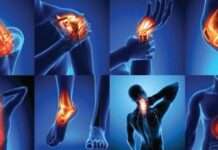(By Solomon Ojigbo)
Advanced glycation end-products (AGEs) are harmful, heterogeneous and complex compounds formed when reducing sugar reacts non-enzymatically with amino acids in proteins and other macromolecules like lipids and nucleic acids.
Recent studies have shown that AGEs accelerate the aging process and have been linked to many serious health concerns. As AGEs accumulate in the body, they begin to attack healthy tissues, organs and systems.
AGEs are formed both endogenously (in the body) and exogenously in a wide variety of food, especially those that are heated. AGEs have also been identified with other exogenous sources, such as tobacco. According to a study by Nicholl and Bucala, tobacco-derived AGEs were identified in lens crystalline and coronary artery vascular walls.
Dietary AGEs
Heat treatment in some foods results in promotion of the Maillard reaction. In the food industry, the Maillard reaction is used to add desirable flavour, colour and aroma to foods, especially caramel production, coffee roasting and bread baking, among others.
The AGEs content of a diet depends on the nutrient composition (foods rich in protein and fatty foods have the highest content) and on the way the food is prepared. AGEs formation can be rapidly accelerated by increasing the time and degree of exposure to heat, whereas steaming, broiling and slow cooking are the best ways of keeping AGEs levels low.
In 2005, a study by Uribarri et al showed that Diet-derived AGEs are major contributors to the body’s AGE pool. It was estimated that approximately 10 per cent of ingested AGEs are assimilated into circulation, two-thirds of which remain in the body, and are incorporated covalently in tissues; only one-third is excreted via the kidneys.
Endogenous AGE formation
Reducing sugars, such as glucose, react non-enzymatically with amino groups in proteins, lipids and nucleic acids through a series of reactions forming Schiff bases and Amadori products to produce AGEs in the body.
There are three major mechanisms in which AGEs could be formed. These are: the Maillard reaction, oxidation of glucose and peroxidation of lipids, and through the polyol pathway.
The formation of AGEs through the Maillard reaction is the most popular and most studied mechanism. It occurs in three phases. First, glucose attaches to a free amino acid (mainly lysine and arginine) of a protein (lipid or DNA) in a non-enzymatic way to form a Schiff base. A Schiff base is a compound that has a carbon to nitrogen double bond where the nitrogen is not connected to hydrogen. The initiation of this first step depends on glucose concentration and takes place within hours. If the concentration of glucose is high, the reaction proceeds; however if the concentration of glucose decreases, this reaction is reversible. This process, known as glycation, is enhanced in diabetes.
During the second phase, the Schiff base undergoes chemical rearrangement over a period of days and forms Amadori products (also known as early glycation products). The Amadori products are more stable compounds but the reaction is still reversible. If there is accumulation of Amadori products, they will undergo complicated chemical rearrangements (oxidations, reductions, and hydrations) and form cross-linked proteins, which is the third phase. This process takes place in weeks or months and is irreversible. The final brownish products are called AGEs and some of them have fluorescent properties. They are very stable and accumulate inside and outside the cells and interfere with protein function,causing tissue damage.
Despite the heterogeneity of AGE structures, a common consequence of their formation is covalent cross-link formation. Proteins affected by this process are usually stable and long lived, such as collagen. The pathological cross-link formation induced by AGE leads to increased stiffness of the protein matrix, hence impeding function, as well as increasing resistance to removal by proteolytic means, which in turn affects the process of tissue remodelling.
According to a study by McCance et al these changes occur with advancing age and are accelerated in diabetes.
Regulation of AGEs in the body
The levels of AGEs are dependent on endogenous production, exogenous intake and renal and enzymatic clearance, which together are responsible for the transient increase and decrease in amount of AGEs in the body. Glyoxalase I, II and carbonyl reductase enzymes are part of the enzymatic detoxification system. In addition, renal excretion eliminates excess of AGEs production under physiological conditions. Some authors have proposed that, with aging as well as in some pathological conditions, there is imbalance in this regulation. This imbalance can be due to an increased endogenous production, or an increased exogenous intake that, in combination with lower renal AGEs removal, leads to the build-up of AGEs observed in elderly people.
Implications for health
Accumulation of AGEs has been found in healthy aging persons, and this accumulation is higher during high glucose concentrations. Microvascular and macrovascular damage, seen in diabetes, is attributed to the build-up of AGEs in tissues.
AGEs have also been observed in a wide range of pathologies such as connective tissue diseases, particularly in rheumatoid arthritis and neurological conditions such as Alzheimer’s disease and end-stage renal disease.
The accumulation of AGEs in the body over time also contributes to changes in the structure and function of the cardiovascular system and manifests as thickening and loss of elasticity of blood vessels, hypertension, endothelia dysfunctionand atherosclerotic plaque formation.
Loss of muscle mass and strength (sarcopenia) is a serious problem among elderly persons. The pathogenesis of sarcopenia is due to several causes, which include hormonal changes, increased oxidative stress, inflammation and inactivity. However, AGEs may also contribute to this condition by increasing oxidative stress and inflammation. Haus et al found a relationship between AGEs and muscular function in elderly persons and proposed that the decline of muscular function observed in aging can be attributed to AGEs.
Although many promising pharmacologic anti-AGE agents exist, their efficacy and safety are still under study. Among such therapeutic agents are amino guanidine, which can act as an antioxidant, quench hydroxyl radicals and cleave cross-links. Consequently, the best ways of reducing the amount of AGEs in the body is to avoid foods high in AGEs, smoking and engage in regular exercise.
Sources:
- Bucala R (1997) Lipid and lipoprotein modification by AGEs: role in atherosclerosis. Exp Physiol 82: 327
- Claudia Luevano-Contreras and Karen Chapman-Novakofski. (2010) Dietary Advanced Glycation End Products and Aging. Nutrients 2, 1247
- Haus, J.M.; Carrithers, J.A.; Trappe, S.W.; Trappe, T.A. (2007) Collagen, cross-linking, and advanced glycation end products in aging human skeletal muscle. J. Appl. Physiol., 103
- McCance DR, Dyer DG, Dunn JA et al. (1993) Maillard reaction products andtheir relation to complications in insulin dependent diabetes mellitus. J Clin Invest 91:2470
- Munch G, Thome J et al. (1997) AGE’s in aging and alzheimers disease. Brain Res Rev 23: 134
- Nicholl ID, Bucala R (1998). AGE and cigarette smoking. Cell Mol Biol 44: 1025
- Singh R., Barden A., Mori T., Beilin L. (2001) Advanced glycation end-products: a review. Diabetologia 44: 129
- Uribarri, J.; Cai, W.; Sandu, O.; Peppa, M.; Goldberg, T.; Vlassara, H. (2005) Diet-derived advanced glycation end products are major contributors to the body’s AGE pool and induce inflammation in healthy subjects. Ann. N. Y. Acad. Sci. 1043














